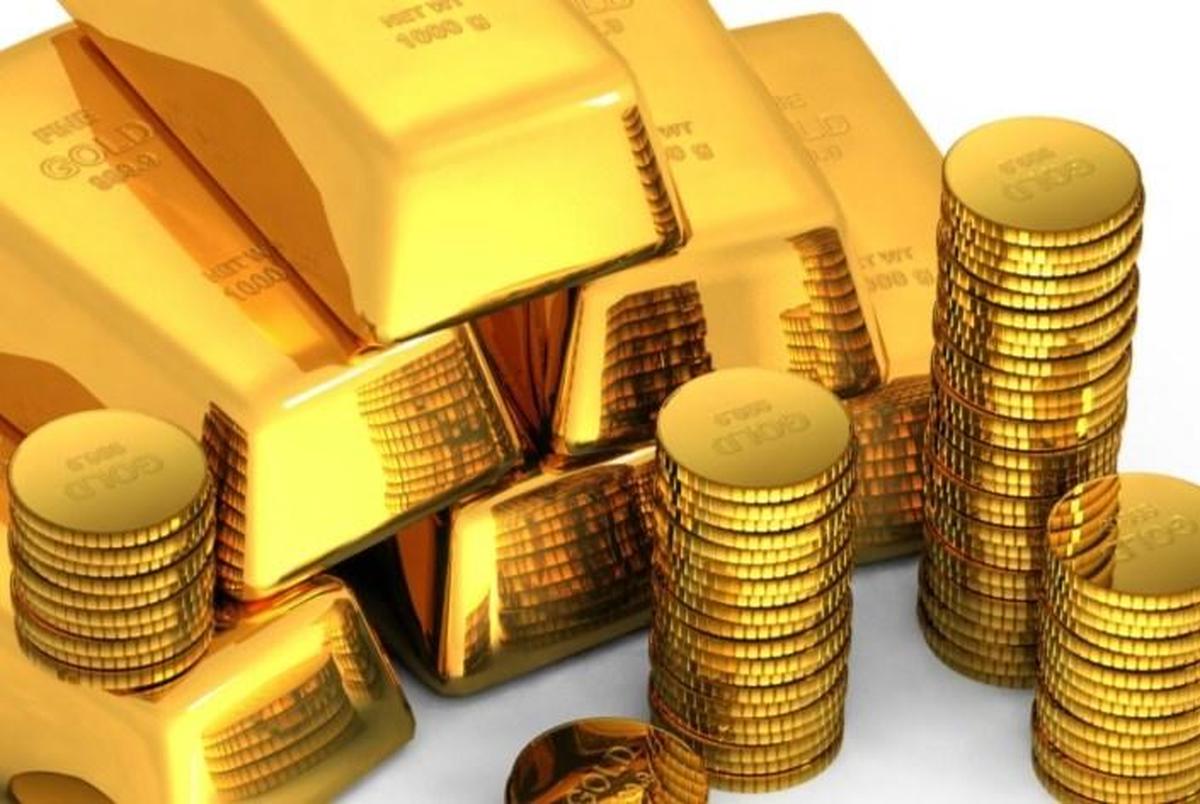شما میزان تاثیر نرخ طلا بر بازار مسکن را چگونه ارزیابی میکنید؟ در هر جامعهای، بازار مسکن به عنوان یکی از بخشهای حیاتی اقتصادی مورد توجه قرار دارد.
این بازار تأثیر زیادی بر اقتصاد کلان دارد و میتواند نشانگری از سلامت و رکود اقتصادی باشد. یکی از عوامل کلیدی که تأثیر مستقیمی بر بازار مسکن دارد، نرخ سکه و وضعیت بازار ارز است.
نرخ سکه به عنوان یکی از فاکتور های اصلی اقتصادی، توانایی تأثیرگذاری بسیار زیادی بر قیمتها و فعالیتهای مختلف اقتصادی دارد، از جمله بازار مسکن.
تغییرات در نرخ سکه میتواند تأثیرات گستردهای بر بازار مسکن داشته باشد. این تأثیرات ممکن است به صورت مستقیم و غیرمستقیم در قیمتهای مسکن، فعالیت ساخت و ساز، تقاضا و عرضه مسکن و حتی الگوهای رفتاری مشتریان و سرمایهگذاران مسکن مشاهده شود.
در این مقاله، به بررسی تأثیر نرخ سکه بر بازار مسکن خواهیم پرداخت. ابتدا به بررسی رابطه بین نرخ سکه و بازار مسکن، سپس به بررسی مکانیسمها و عواملی که این تأثیرات را شکل میدهند، خواهیم پرداخت.
در نهایت، پیامدها و نتیجهگیریهای مهم این تأثیرات را بررسی میکنیم. این مقاله به کمک تحلیلهای اقتصادی و اطلاعات موجود در این حوزه، به بررسی عمیقتر این موضوع میپردازد تا درک بهتری از پیامدها و روندهای بازار مسکن ارائه دهد
توضیح کوتاهی در مورد اهمیت مسکن و طلا در اقتصاد ایران
در اقتصاد ایران، مسکن و طلا هر دو نقشهای مهمی را ایفا میکنند:
- اهمیت مسکن:
- مسکن به عنوان یکی از اصلیترین نیازهای انسانی، از اهمیت بسیاری برخوردار است. فرآیند ساخت و توسعه مسکن، ایجاد اشتغال، تحریک فعالیتهای اقتصادی مرتبط با ساخت و ساز، و افزایش درآمد و ثروت ملی را تسهیل میکند. همچنین، مسکن به عنوان یکی از مهمترین داراییهای افراد، تأثیر زیادی در افزایش ثروت خانوارها و پایداری اجتماعی دارد.
- اهمیت طلا:
- طلا به عنوان یکی از مهمترین منابع ثروت و پشتوانه ارزی، اهمیت زیادی در اقتصاد ایران دارد. این فلز ارزش ذاتی بالایی دارد و به عنوان یک منبع اصلی برای حفظ ارزش پول و مقابله با تورم مورد استفاده قرار میگیرد. همچنین، طلا به عنوان یکی از ابزارهای سرمایهگذاری محبوب در بین مردم ایران محسوب میشود و تأثیر زیادی بر بازارهای مالی و اقتصادی دارد.
در کل، هر دوی این عوامل، یعنی مسکن و طلا، از اهمیت بسیاری برخوردارند و تأثیر زیادی بر اقتصاد ایران دارند، و بررسی تأثیرات تغییرات قیمت طلا بر مسکن، یک موضوع اساسی برای درک بهتر دینامیکهای اقتصادی کشور است.
در ایران، بازار مسکن و بازار طلا دو بخش اساسی از اقتصاد را تشکیل میدهند و تأثیر زیادی بر زندگی اقتصادی و اجتماعی مردم دارند. ارتباط نزدیک بین این دو بازار، به ویژه تأثیر قیمت طلا بر بازار مسکن، موضوعی است که برای تحلیل و درک بهتر رفتار بازارها و تداوم پایداری اقتصادی اهمیت دارد.
اهمیت بررسی تأثیرات قیمت طلا بر مسکن:
- تأثیر بر قیمت مسکن: قیمت طلا به عنوان یکی از عوامل مؤثر بر ارزش پول و قدرت خرید، میتواند تأثیر زیادی بر قیمت مسکن داشته باشد. افزایش یا کاهش قیمت طلا میتواند به عنوان یکی از عوامل موثر در افزایش یا کاهش قیمت مسکن مطرح شود.
- تأثیر بر سرمایهگذاری: برای بسیاری از افراد، مسکن و طلا به عنوان دو راهکار محبوب برای سرمایهگذاری در نظر گرفته میشوند. بررسی تأثیرات قیمت طلا بر مسکن میتواند به سرمایهگذاران کمک کند تا تصمیمهای بهتری درباره سرمایهگذاری خود در این دو بخش بگیرند.
- تأثیر بر قدرت خرید و ثروت خانوارها: تغییرات قیمت طلا میتواند تأثیر زیادی بر قدرت خرید و ثروت خانوارها داشته باشد، زیرا خیلی از خانوارها دارای سرمایهگذاری در طلا و مسکن هستند. بنابراین، بررسی تأثیرات این تغییرات بر مسکن میتواند به درک بهتر از وضعیت اقتصادی خانوارها کمک کند.
بنابراین، بررسی تأثیرات قیمت طلا بر مسکن در ایران، به منظور درک بهتر دینامیکهای بازارها، اتخاذ تصمیمات بهتر اقتصادی و ارائه سیاستهای مناسب در حوزه مسکن و اقتصادی، از اهمیت بسیاری برخوردار است.
بررسی تاریخچه تغییرات قیمت طلا و مسکن در دهههای گذشته نشان میدهد که این دو بازار در ایران تحولات مختلفی را تجربه کردهاند:
تاریخچه تغییرات قیمت طلا:
- دهه ۱۹۷۰:
- در ابتدای دهه ۱۹۷۰، قیمت طلا به صورت پایدار بود. اما با افزایش نفت، تورم و تحریمها، قیمت طلا در سالهای پس از انقلاب ۱۳۵۷ افزایش یافت.
- دهه ۱۹۸۰:
- در این دوره، تحریمها و شرایط اقتصادی نامطلوب باعث افزایش قیمت طلا شد. همچنین، تحولات سیاسی در دهه ۸۰ موجب نوسانات قیمتی شدید در بازار طلا شد.
- دهه ۱۹۹۰:
- در این دهه، بازار طلا به عنوان یک پناهگاه امن از تورم و نوسانات ارزی شناخته شد. این بازار با ورود سرمایهگذاران و حذف برخی از محدودیتهای سیاستگذاری، رشد چشمگیری را تجربه کرد.
- دهه ۲۰۰۰:
- در دهه ۲۰۰۰، با توسعه بیشتر بازار مالی و سرمایهگذاری، قیمت طلا به شدت افزایش یافت. این افزایش به خصوص در دوران تحریمهای بینالمللی علیه ایران تقویت شد.
- دهه ۲۰۱۰:
- در این دوره، نوسانات قیمتی طلا به علت تحریمها و شرایط اقتصادی مختلف، ادامه داشت. اما با ورود به توافق هستهای و برخی از تسهیلات مالی، بازار طلا مواجه با نوسانات کمتری شد.
تاریخچه تغییرات قیمت مسکن:
- دهه ۱۹۷۰:
- در این دوره، بازار مسکن در ایران تحولات کمتری را تجربه کرد و بسیاری از افراد به دلیل نبود محدودیتهای سیاسی و اقتصادی قادر به خرید ملک شدند.
- دهه ۱۹۸۰:
- با تحولات سیاسی و اقتصادی این دهه، قیمت مسکن در ایران رشد چشمگیری داشت. افزایش تورم و تغییرات سیاسی از عوامل اصلی این رشد بود.
- دهه ۱۹۹۰:
- در این دوره، با ورود سرمایهگذاران خارجی و توسعه بیشتر بازار مسکن، قیمت مسکن دوباره افزایش یافت. همچنین، سیاستهای دولت در زمینه ارائه وام مسکن نقش مهمی در این روند داشت.
- دهه ۲۰۰۰:
- با افزایش تقاضا و توسعه بیشتر بخشهای اقتصادی، قیمت مسکن به شدت افزایش یافت. این افزایش به خصوص در شهرهای بزرگ و مراکز صنعتی بود.
- دهه ۲۰۱۰:
- در این دوره، با ورود به دوران تحریمها و نوسانات اقتصادی، قیمت مسکن با نوسانات شدیدی مواجه شد. اما با ورود به توافق هستهای و ارائه تسهیلات مالی، بازار مسکن مواجه با پایداری نسبی شد.
این تاریخچه نشان میدهد که تغییرات در قیمت طلا و مسکن در ایران به عنوان دو عنصر اساسی اقتصادی، تحت تأثیر متغیرهای مختلفی بوده و تحولات اقتصادی و سیاسی مختلفی را تجربه کردهاند.
تحلیل روند قیمتها و ارتباط آن با رویدادها و سیاستهای دولتی:
تحلیل روند قیمت طلا و مسکن و ارتباط آن با رویدادها و سیاستهای دولتی میتواند به ما کمک کند تا بهترین درک را از دینامیکهای بازارهای مذکور داشته باشیم. در ادامه، میتوانیم به تحلیل این ارتباطات در طول دورههای زمانی مختلف بپردازیم
- دهه ۱۹۷۰:
- طی دهه ۱۹۷۰، با ورود نفت به عنوان منبع درآمدی عمده کشور، قیمت طلا و مسکن به شدت افزایش یافت. دولت نیز با سیاستهایی همچون تسهیلات مسکن و سرمایهگذاریهای دولتی در صنعت نفت و معادن، تأثیر مثبتی بر روند قیمتها داشت.
- دهه ۱۹۸۰:
- در دهه ۸۰، با وقوع انقلاب اسلامی و تغییرات سیاسی، ارتباط میان قیمت طلا و مسکن با شرایط سیاسی و اقتصادی روزافزون شد. تحریمها، جنگ ایران و عراق، و نوسانات تورمی باعث نوسانات شدید در بازارهای طلا و مسکن شدند.
- دهه ۱۹۹۰:
- در دهه ۹۰، با ورود به دوره بازسازی پس از جنگ و اصلاحات اقتصادی، دولت به منظور تحریک اقتصاد و رونق صنعت مسکن اقداماتی انجام داد. تسهیلات مالی، ارتقاء زیرساختها و افزایش تولید مسکن تأثیر مستقیمی بر قیمتها داشت.
- دهه ۲۰۰۰:
- در این دوره، با ورود به دوران توسعه اقتصادی و افزایش تجارت بینالمللی، دولت سیاستهایی را برای جلب سرمایهگذاریها و تقویت اقتصاد محلی اجرا کرد. این سیاستها به همراه نوسانات قیمت نفت و تحریمهای بینالمللی، تأثیرات قابل توجهی بر قیمت طلا و مسکن داشتند.
- دهه ۲۰۱۰:
- در این دوره، با ورود به دوره تحریمها و تغییرات سیاسی، دولت سعی کرد با اجرای سیاستهای توسعهمحور و ارائه تسهیلات مالی، نوسانات قیمت طلا و مسکن را کنترل کند. همچنین، امضای توافق هستهای باعث کاهش نوسانات قیمتی شد.
در کل، ارتباط میان قیمت طلا و مسکن با رویدادها و سیاستهای دولتی در ایران، تاریخچه پیچیدهای دارد و نشان میدهد که عوامل اقتصادی، سیاسی و اجتماعی بسیاری بر روند قیمتها تأثیر میگذارند
بررسی عوامل داخلی و خارجی مؤثر بر قیمت طلا.
بررسی عوامل داخلی و خارجی که بر قیمت طلا تأثیر میگذارند، اطلاعات مهمی را ارائه میدهد تا درک بهتری از رفتار بازارهای طلا و تحلیل صحیحتری از تغییرات قیمت طلا داشته باشیم. در ادامه، به بررسی این عوامل میپردازیم:
عوامل داخلی:
- سیاستهای دولتی: تصمیمات دولت مرتبط با سیاستهای پولی، مالی، و اقتصادی میتوانند بر قیمت طلا تأثیر بگذارند. اقداماتی مانند تورم، نرخ ارز، سطح بهرهگیری از طلا توسط دولت، واردات و صادرات طلا، و ارائه تسهیلات مالی میتوانند اثرگذار باشند.
- وضعیت اقتصادی داخلی: عواملی مانند تورم، نرخ بیکاری، رشد اقتصادی، و سرمایهگذاریهای داخلی میتوانند تأثیر بسزایی بر قیمت طلا داشته باشند. به عنوان مثال، در دوران ناپایداری اقتصادی، افزایش تقاضا برای سرمایهگذاریهای مختلف میتواند به افزایش قیمت طلا منجر شود.
عوامل خارجی:
- نرخ ارز: ارتباط نزدیکی بین قیمت طلا و ارزهای خارجی وجود دارد. وقوع تغییرات در نرخ ارز میتواند تأثیر مستقیمی بر قیمت طلا داشته باشد، زیرا طلا به عنوان یک سرمایهگذاری محبوب برای مقابله با نوسانات ارزی شناخته میشود.
- تورم و نرخ بهره: تورم و نرخ بهره نیز تأثیرگذاری قابل توجهی بر قیمت طلا دارند. در شرایط تورمی، طلا به عنوان یک پناهگاه امن برای حفظ ارزش پول مورد توجه قرار میگیرد.
- وضعیت اقتصادی جهانی: عواملی مانند تحولات سیاسی و اقتصادی جهانی، نوسانات نرخ ارز، وضعیت بازارهای مالی جهانی و قیمت سایر سرمایهگذاریها میتوانند تأثیرگذاری بر قیمت طلا داشته باشند.
- تقاضا و عرضه جهانی: تقاضا و عرضه طلا در بازارهای جهانی نیز میتوانند به عنوان عوامل مؤثر بر قیمت طلا در نظر گرفته شوند. افزایش تقاضا و کاهش عرضه میتواند منجر به افزایش قیمت طلا شود و بالعکس.
در کل، عوامل داخلی و خارجی متعددی وجود دارند که میتوانند بر قیمت طلا تأثیرگذار باشند. به منظور تحلیل دقیقتر و پیشبینی بهتر تغییرات قیمتی، نیاز است که این عوامل به دقت بررسی شوند و تأثیرات آنها در بازارهای طلا مورد ارزیابی قرار گیرد.
بررسی ارتباطات و تفاوتها در رفتار بازارها
بررسی ارتباطات و تفاوتها در رفتار بازارهای مسکن و طلا میتواند به درک بهتری از دینامیکهای این دو بازار کمک کند. در ادامه، به برخی از ارتباطات و تفاوتها در رفتار بازارهای مسکن و طلا اشاره میکنیم:
ارتباطات:
- نقل و انتقال سرمایه: بسیاری از سرمایهگذاران مسکن همزمان در بازار طلا نیز فعالیت میکنند و برعکس. این ارتباط بین دو بازار میتواند تأثیر زیادی بر قیمتها داشته باشد؛ زیرا تغییرات در یک بازار میتواند به سرعت به بازار دیگر منتقل شود.
- پناهگاه سرمایهگذاری: هر دو بازار طلا و مسکن به عنوان پناهگاههای سرمایهگذاری در دوران نوسانات اقتصادی شناخته میشوند. افراد در دوران عدم استقرار و تورم به دنبال سرمایهگذاری در این دو بازار هستند.
- تأثیر عوامل اقتصادی: عواملی همچون تورم، نرخ بهره، وضعیت اقتصادی کلی کشور و سیاستهای دولتی میتوانند به طور مستقیم بر هر دو بازار تأثیرگذار باشند.
تفاوتها:
- طبیعت سرمایهگذاری: در بازار طلا، سرمایهگذاری معمولاً بیشتر به عنوان یک منبع ذخیره ارزش و مقابله با تورم صورت میگیرد. اما در بازار مسکن، سرمایهگذاری به عنوان یک منبع درآمد و سرمایهگذاری بلندمدت مدنظر است.
- سرعت واکنش: بازار طلا معمولاً به سرعت واکنش نشان میدهد و قیمتها در آن به سرعت تغییر میکنند، در حالی که بازار مسکن تغییراتی کمتر و آهستهتری دارد.
- عوامل تأثیرگذار: در بازار طلا، عواملی مانند تورم و تحریمها بر قیمتها تأثیرگذارتر هستند، در حالی که در بازار مسکن، عواملی همچون تقاضا و عرضه، سیاستهای دولتی و شرایط اقتصادی محلی بیشتر تأثیرگذار هستند.
- آشکاری بازار: بازار طلا به دلیل آسانی تردد در بازارهای جهانی، قابلیتی بیشتری در شفافیت قیمت دارد، در حالی که بازار مسکن معمولاً دچار نوسانات و عدم شفافیت بیشتری است.
به طور کلی، بازارهای مسکن و طلا ارتباطاتی نزدیکی دارند اما تفاوتهای زیادی در رفتار و عوامل تأثیرگذار دارند که باید در تحلیل آن همه عوامل موثر در بازار را در نظر گرفت:
- تنوع در سرمایهگذاری: به جای تمرکز بر یک بازار، سعی کنید سرمایهگذاری خود را در بازارهای مختلفی گسترش دهید. این تنوع باعث کاهش ریسک و تعادل در سرمایهگذاری شما خواهد شد.
- پیشبینی و تحلیل بازار: استفاده از تحلیلهای فنی و اصولی برای پیشبینی تغییرات قیمتها و شناخت الگوهای بازار میتواند به شما کمک کند تا بهترین تصمیمات را بگیرید.
- استفاده از ابزارهای مالی متنوع: استفاده از ابزارهای مالی مختلفی مانند قراردادهای آتی، صندوقهای سرمایهگذاری مختلط و برگزاری معاملات معکوس (Short Selling) میتواند به شما کمک کند تا از فرصتهای بازار بهرهبرید و ریسک را کاهش دهید.
- مدیریت ریسک: استفاده از روشهای مدیریت ریسک مانند تنظیم سطح سرمایهگذاری، استفاده از استاپلاس، و ایجاد پورتفوی متنوع میتواند به شما کمک کند تا در برابر نوسانات بازار مقاومت نشان دهید.
- پیگیری اخبار و رویدادها: برای اطلاع از آخرین تحولات در بازارهای مسکن و طلا، پیگیری مستمر اخبار و رویدادهای مرتبط با عملکرد این بازارها مهم است. این کمک میکند تا بتوانید بهترین تصمیمات را در هر لحظه بگیرید.
- مشاوره حرفهای: مشاوره از کارشناسان مالی و سرمایهگذاری میتواند به شما کمک کند تا استراتژی مناسبی برای مدیریت تأثیرات متغیرهای قیمتی تعیین کنید و از فرصتهای موجود بهرهمند شوید.
با اجرای این راهکارها و پیشنهادات، میتوانید بهترین استراتژی را برای مدیریت تأثیرات متغیرهای قیمتی در بازارهای مسکن و طلا انتخاب کنید و از نوسانات بازار بهرهمند شوید
سال 2010:
-
- رویدادها: بحران مالی جهانی از سال 2008 همچنان تأثیرگذار بود و دولتها به دنبال سیاستهای تحریکی برای احیای اقتصاد بودند.
- سیاستهای دولتی: بسیاری از کشورها سیاستهای تحریکی اقتصادی و کاهش نرخ بهره را اجرا کردند.
- سال 2011:
- رویدادها: ادامه بحران اقتصادی در اروپا و تحولات سیاسی در منطقه خاورمیانه و شمال آفریقا.
- سیاستهای دولتی: برخی کشورها به دنبال اجرای برنامههای تنظیمی برای مقابله با بحران اقتصادی بودند.
- سال 2012:
- رویدادها: تدابیر تنظیمی بیشتری در اروپا برای مقابله با بحران اقتصادی.
- سیاستهای دولتی: اجرای برنامههای تنظیمی در بسیاری از کشورها برای کاهش نرخ بهره و ایجاد تحریک در بازارهای مالی.
- سال 2013:
- رویدادها: تداوم بحران اقتصادی در برخی از کشورهای اروپایی و تحولات سیاسی در کشورهای خاورمیانه.
- سیاستهای دولتی: تدابیر تنظیمی بیشتر در برخی از کشورها به منظور احیای اقتصاد و افزایش رشد اقتصادی.
- سال 2014:
- رویدادها: افزایش نگرانیها در مورد رشد اقتصادی جهانی و تحولات سیاسی در برخی از مناطق.
- سیاستهای دولتی: برخی از کشورها به دنبال اجرای برنامههای تنظیمی و تحریکی برای ایجاد رشد اقتصادی بیشتر بودند.
- سال 2015:
- رویدادها: ادامه نگرانیها در مورد رشد اقتصادی جهانی و تأثیرات بحران مهاجرت در اروپا.
- سیاستهای دولتی: برخی کشورها سیاستهای تحریکی بیشتری را اجرا کردند به منظور تحریک اقتصاد و کاهش نرخ بیکاری.
- سال 2016:
- رویدادها: انتخابات ریاستجمهوری در ایالات متحده و تغییرات سیاسی در بسیاری از کشورها.
- سیاستهای دولتی: اعمال سیاستهای مالی و اقتصادی جدید توسط دولتها به منظور تحریک رشد اقتصادی.
- سال 2017:
- رویدادها: افزایش تنشها در منطقه خاورمیانه و تغییرات سیاسی در بسیاری از کشورها.
- سیاستهای دولتی: ادامه اجرای سیاستهای تحریکی در برخی از کشورها به منظور ایجاد رشد اقتصادی و استقرار پایداری.
این تحلیلات نشان میدهد که رویدادها و سیاستهای دولتی میتوانند تأثیر مهمی بر روند قیمت طلا داشته باشند، زیرا اقتصاد و سیاستها بازارها را مستقیماً تحت تأثیر خود قرار میدهند.
سال 2018:
- سال 2018:
- رویدادها: تشدید تنشهای تجاری بین آمریکا و چین، و تأثیرات آن بر بازارهای جهانی.
- سیاستهای دولتی: برخی کشورها سیاستهای تحریکی بیشتری را اجرا کردند به منظور تعادل دادن به اقتصادهای خود.
- سال 2019:
- رویدادها: ادامه تنشهای تجاری جهانی و تأثیرات ناشی از برنامههای تحریمی آمریکا بر بازارهای جهانی.
- سیاستهای دولتی: برخی کشورها سیاستهای مالی تنظیمی و تحریکی بیشتری را اجرا کردند به منظور تقویت اقتصاد خود.
- سال 2020:
- رویدادها: شیوع ویروس کرونا و پاندمی آن در سطح جهانی، کاهش فعالیتهای اقتصادی و تحریکهای مالی بزرگ توسط دولتها.
- سیاستهای دولتی: دولتها برای مقابله با تأثیرات منفی ویروس کرونا سیاستهای تحریکی و پشتیبانی از اقتصادهای خود را اجرا کردند، که تأثیر زیادی بر بازارهای مالی داشت.
- سال 2021:
- رویدادها: ادامه تأثیرات ویروس کرونا بر اقتصاد جهانی و تلاشهای برای احیای رشد اقتصادی.
- سیاستهای دولتی: دولتها در بسیاری از کشورها سیاستهای تحریکی مالی را ادامه دادند و بستههای اقتصادی را اجرا کردند تا از تأثیرات ویروس کرونا جبران شود.
- سال 2022:
- رویدادها: تداوم تأثیرات ویروس کرونا بر اقتصادهای جهانی و تلاش برای بازگشت به رشد اقتصادی پس از بحران.
- سیاستهای دولتی: دولتها همچنان سیاستهای تحریکی مالی را ادامه دادند و بستههای پشتیبانی از اقتصادهای خود را اجرا کردند تا بهبود راه بیاندازند.
- سال 2023:
- رویدادها: مواجهه با چالشهای جدیدی در مسیر بهبود اقتصادی پس از ویروس کرونا و تأثیرات تغییرات سیاسی و جهانی.
- سیاستهای دولتی: دولتها به دنبال اجرای سیاستهای مالی مناسب برای مقابله با چالشهای جدید و ایجاد رشد اقتصادی پایدار هستند.
نتیجه گیری:
این تحلیل نشان میدهد که رویدادها و سیاستهای دولتی میتوانند تأثیرات قابلتوجهی بر روند قیمت طلا داشته باشند و تحولات در اقتصادها و سیاستها بازارهای مالی را مستقیماً تحت تأثیر قرار دهند.
تحلیل نرخ سکه و تأثیرات آن بر بازار مسکن نشان میدهد که این عامل اقتصادی اثرات قابل توجهی بر این بازار دارد.
افزایش یا کاهش نرخ سکه میتواند به طور مستقیم بر قیمتهای مسکن تأثیر بگذارد. از طرفی، تغییرات در نرخ سکه میتواند تقاضا و عرضه در بازار مسکن را نیز تحت تأثیر قرار دهد.
با افزایش نرخ سکه، هزینههای ساخت مسکن و هزینههای مرتبط با آن افزایش مییابد، که منجر به افزایش قیمتهای مسکن میشود. این امر ممکن است باعث کاهش تقاضا و فعالیتهای ساخت و ساز گردد.
از سوی دیگر، کاهش نرخ سکه میتواند به افزایش تقاضا و فعالیتهای ساخت و ساز منجر شود.
در نتیجه، سیاستگذاران و صاحبان سرمایه در بازار مسکن باید با توجه به نوسانات نرخ سکه، رویکردهای متناسبی را در تصمیمگیریهای خود اتخاذ کنند.
همچنین، برای حفظ پایداری و رشد صحیح بازار مسکن، نیاز است که سیاستهای اقتصادی و مالی مناسبی تدوین شود که به مدیریت مناسب نرخ سکه و کنترل تأثیرات ناخواسته آن بر بازار مسکن کمک کند







